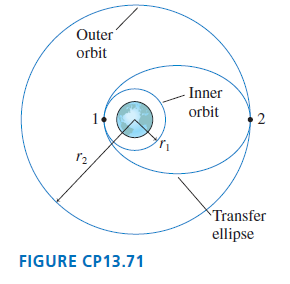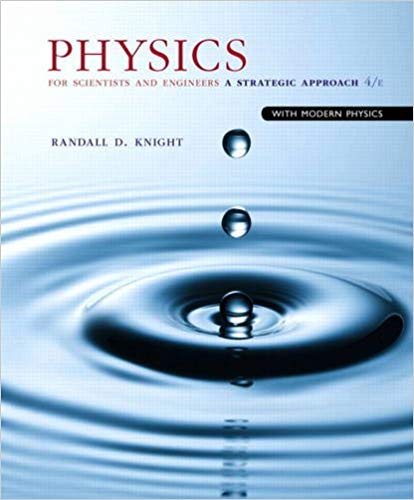Lets look in more detail at how a satellite is moved from one circular orbit to another.
Question:
 a. A satellite moving along the elliptical orbit has to satisfy two conservation laws. Use these two laws to prove that the velocities at points 1 and 2 are
a. A satellite moving along the elliptical orbit has to satisfy two conservation laws. Use these two laws to prove that the velocities at points 1 and 2 are

The prime indicates that these are the velocities on the elliptical orbit. Both reduce to Equation 13.22 if r1 = r2 = r.
b. Consider a 1000 kg communications satellite that needs to be boosted from an orbit 300 km above the earth to a geosynchronous orbit 35,900 km above the earth. Find the velocity v1 on the inner circular orbit and the velocity v'1 at the low point on the elliptical orbit that spans the two circular orbits.
c. How much work must the rocket motor do to transfer the satellite from the circular orbit to the elliptical orbit?
d. Now find the velocity v'2 at the high point of the elliptical orbit and the velocity v2 of the outer circular orbit.
e. How much work must the rocket motor do to transfer the satellite from the elliptical orbit to the outer circular orbit?
f. Compute the total work done and compare your answer to the result of Example 13.6.
Step by Step Answer:

Physics for Scientists and Engineers A Strategic Approach with Modern Physics
ISBN: 978-0133942651
4th edition
Authors: Randall D. Knight





